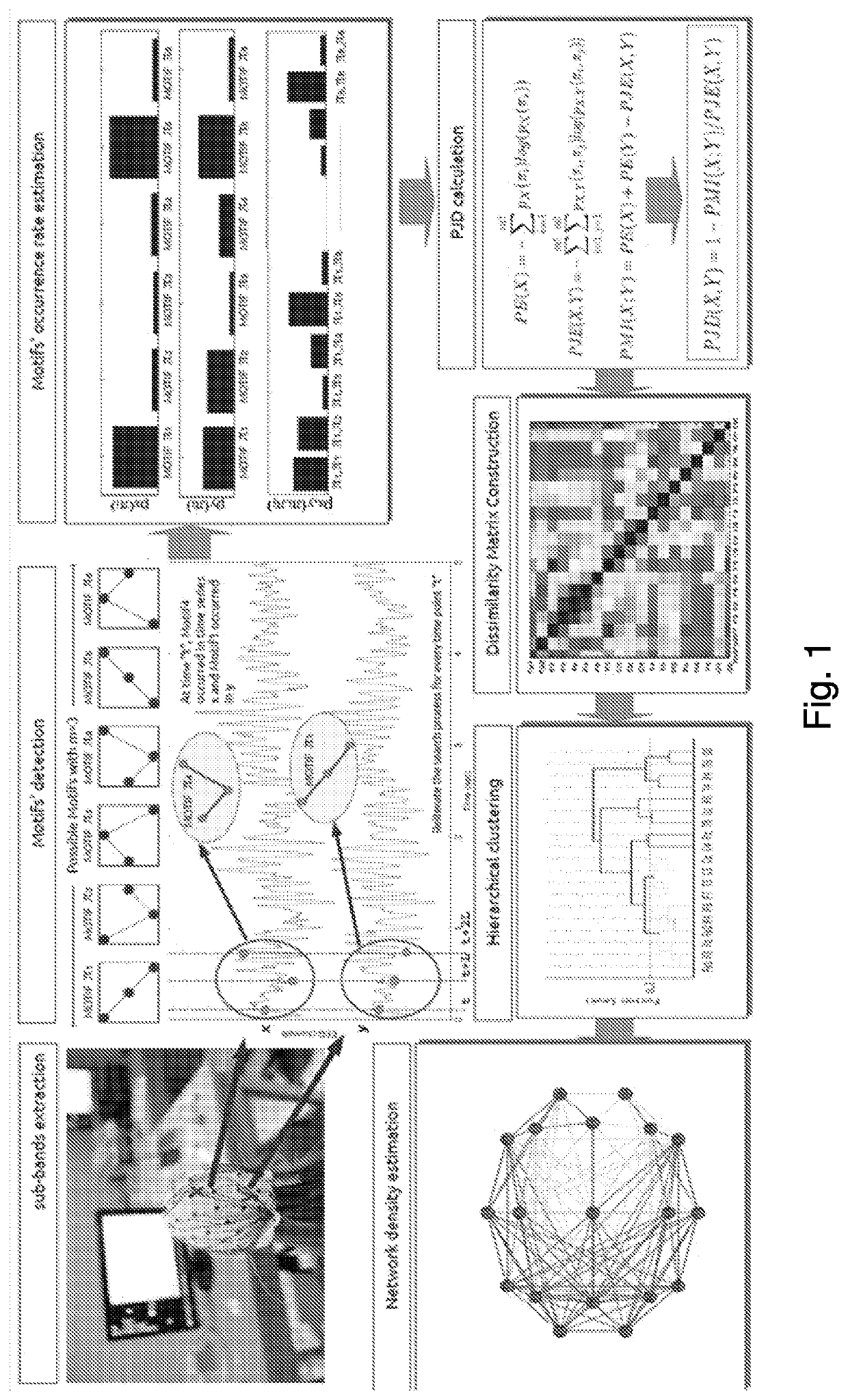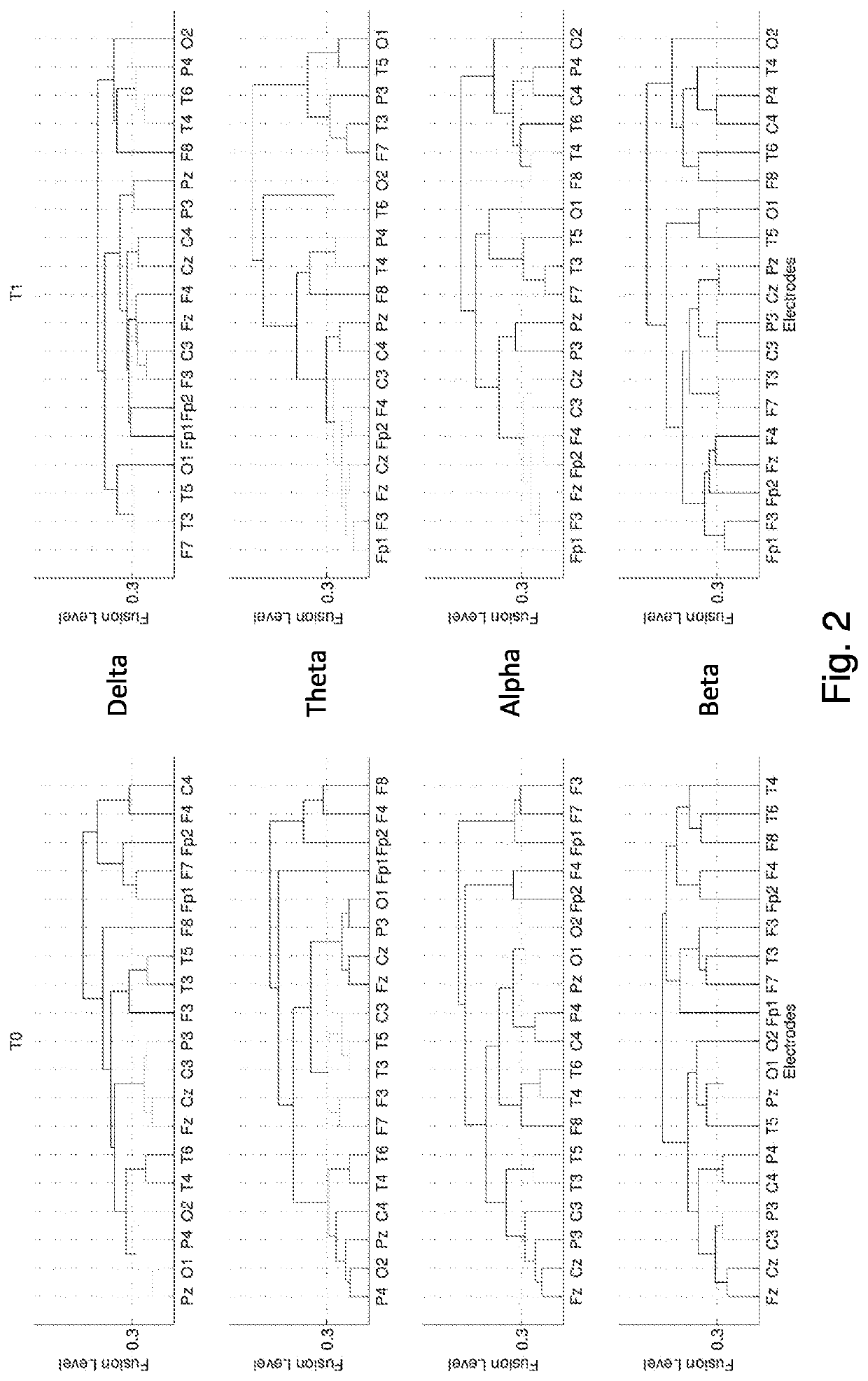Method for detecting a conversion from mild cognitive impairment to alzheimer disease
a technology of mild cognitive impairment and conversion method, applied in the field of detecting the conversion from mild cognitive impairment to alzheimer disease, can solve the problems of memory deficit, personality change, and the inability of neurons to function, and achieve the effect of improving the performance of daily activities, reducing the number of neurons, and improving the performance of cognitive function
- Summary
- Abstract
- Description
- Claims
- Application Information
AI Technical Summary
Benefits of technology
Problems solved by technology
Method used
Image
Examples
Embodiment Construction
[0033]The method of the invention for detecting a conversion from mild cognitive impairment (MCI) to Alzheimer disease (AD), illustrated in the Figures, comprises the following stages:
[0034]a) providing as input data a plurality of first signals EEG (1, . . . , n), thus a first set of n signals, recorded at a first time T0 and defining a first tracing EEG-T0 of a patient with mild cognitive impairment, and a plurality of second signals EEG (1, . . . , n), thus a second set of n signals, recorded at a second time T1 and defining a second tracing EEG-T1 of the same patient, each first signal of said plurality of first signals and each second signal of said plurality of second signals corresponding to a respective electrode V (with V=1, . . . , n; thus, there are n electrodes), the first tracing EEG-T0 and the second tracing EEG-T1 being divided into epochs (or windows) w of equal duration;
[0035]b) for each epoch w of the first tracing EEG-T0 extracting at least two first sub-tracings ...
PUM
 Login to View More
Login to View More Abstract
Description
Claims
Application Information
 Login to View More
Login to View More - R&D
- Intellectual Property
- Life Sciences
- Materials
- Tech Scout
- Unparalleled Data Quality
- Higher Quality Content
- 60% Fewer Hallucinations
Browse by: Latest US Patents, China's latest patents, Technical Efficacy Thesaurus, Application Domain, Technology Topic, Popular Technical Reports.
© 2025 PatSnap. All rights reserved.Legal|Privacy policy|Modern Slavery Act Transparency Statement|Sitemap|About US| Contact US: help@patsnap.com



